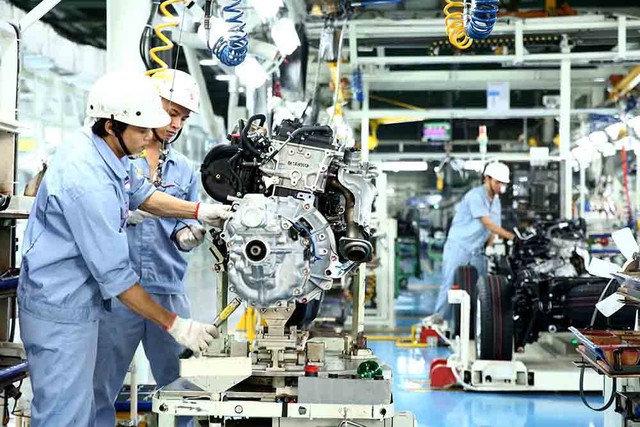Machinery and equipment exports to RCEP markets up 23%
VGP - Viet Nam earned US$13 billion from exporting machines and equipment to the Regional Comprehensive Economic Partnership (RCEP) markets in 2022, up 23 percent against the previous year and accounting for 38.55 percent of the total export value of the sector.

The General Department of Customs announced that export of machines and equipment hit US$45.75 billion last year, up 19.4 percent and making up 12.32 percent of the nation's total export turnover.
The export of the items to the Comprehensive and Progressive Trans-Pacific Partnership (CPTPP) members and EU members were estimated at US$6.14 billion and US$5.63 billion, up 21 percent and 38.5 percent, respectively.
However, in the first four months of this year, the exports saw a year-on-year decrease of 5.9 percent, reaching US$12 billion due to the global trade slowdown.
Viet Nam to benefit most from RCEP
Viet Nam and Malaysia are expected to benefit the most from RCEP, according to a World Bank (WB) report released in April 2022.
The WB stated that, the average trade weighted tariff imposed by Viet Nam declines from 0.8 percent to 0.2 percent while the tariffs faced by the country are reduced from 0.6 percent to 0.1 percent between 2000 and 2035.
RCEP will help Viet Nam access consumer markets which is twice the size of the markets in the CPTPP, as RCEP includes China, the Republic of Korea and Japan.
About 50 percent of the population in RCEP, or 1.1 billion people, contribute US$10 or more per day based on purchasing power.
The agreement can help boost the middle class by 27 million people for all member countries by 2035, of which Viet Nam is expected to benefit the most when it has an additional 1.7 million people enter this class, according to the WB.
The RCEP was officially signed on November 15, 2020 between 10 ASEAN Member States and its five partners including China, Japan, the Republic of Korea, Australia and New Zealand. The trade deal has entered into force since January 1, 2022.
It has become the largest free trade agreement in the world, covering nearly one third of the population and about 30 percent of the global gross domestic product.

